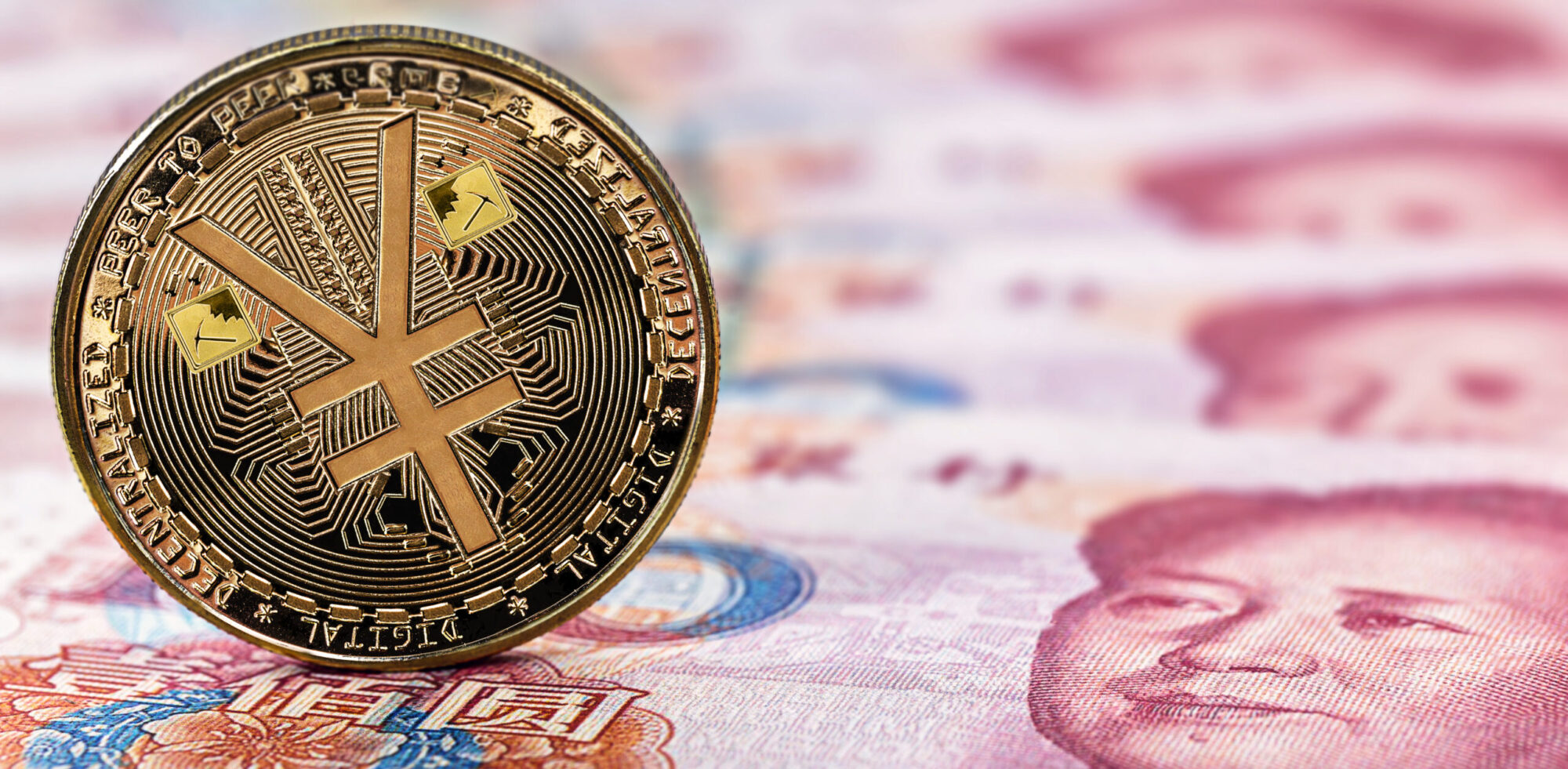
The birth of digital money has transformed the world’s financial system with top central banks globally exploring digital forms of their own currency. Leading the pack is China’s digital yuan, the formal name used for the Digital Currency Electronic Payment (DCEP), which has set the pace as a top-tier currency in international trade. With increasing adoption and backing from the Chinese government, the digital yuan is picking up pace as a global substitute for fiat currencies, cutting into the U.S. dollar’s dominance of cross-border payments.
The digital yuan, which is a government-backed digital currency, is a component of China’s broader effort to modernize its financial system and increase the global usage of its currency. While China is amassing power in world finance and commerce, the digital yuan has also become a key instrument for furthering its economic and geopolitical influence. Since it can optimize efficiency, reduce the cost of transactions, and give greater transparency, the digital yuan will reshape the future of world trade.
The Birth of the Digital Yuan: A Response to Global Trends
China’s attempt at developing a digital currency is not a unique occurrence. The rise of digital currencies around the world, prompted by advances in blockchain technology and the increasing demand for efficient and secure payment systems, has prompted central banks to explore their own digital alternatives. The digital yuan is China’s response to these international advancements, placing the country at the forefront of the digital currency revolution.
China’s central bank, the People’s Bank of China (PBOC), has been at the forefront of research and testing the digital yuan since 2014, making it one of the world’s major economies to launch a central bank digital currency (CBDC). While others are still in the experimental stages with CBDCs in their early stages, China has already launched pilot programs in several cities, testing the currency with consumers and businesses. The success of the pilots has opened the door for the digital yuan to become an ever-more significant part of international trade.
The digital yuan is appealing because it can make payments easier, reduce transaction costs, and provide more transparency. Compared to traditional currencies, which require banks and middlemen for international transactions, the digital yuan can enable direct peer-to-peer transfer without having to go through costly and time-consuming procedures. That makes it a preferable choice for businesses engaged in cross-border trade, particularly those seeking faster and more secure channels for settling payment.
The Digital Yuan and International Trade
The digital yuan’s most significant advantage is that it allows cross-border payments to be made without using the U.S. dollar or traditional financial institutions. Historically, the U.S. dollar has ruled global trade as the international reserve currency and preferred medium of exchange for paying for transactions. But as the world economy is getting more integrated and diversified, more countries are switching to dollar alternatives increasingly in hopes of reducing their dependence on the U.S. financial system and reducing geopolitical risk.
The digital yuan provides an excellent solution to this issue. By allowing companies to settle up in yuan directly, the digital currency eliminates dollar-based intermediaries and reduces currency conversion costs. This is particularly important for countries trading with China as it allows them to avoid the dollar-based financial system and settle transactions at a lower cost and more efficiently.
In recent years, a group of nations has signaled that they are willing to use the digital yuan for trade. China has reached agreement with a number of countries to make use of the digital yuan for cross-border payments, including Russia, Thailand, and the United Arab Emirates. These deals are reflective of China’s broader strategy of promoting international use of its currency and the digital yuan as a competitor to the U.S. dollar as a global currency for trade.
Additionally, the linking of the digital yuan with China’s Belt and Road Initiative (BRI), a grand infrastructure project to increase trade connectivity between China and countries in Asia, Africa, and Europe, has further increased its use. Through the BRI, China has managed to increase its outreach and get countries using the digital yuan. This has even more solidified the digital yuan as a premier currency in international trade.
Advantages of the Digital Yuan in International Business
Efficiency and Speed
The digital yuan has significant gains in the speed and efficiency of the transactions compared to other conventional methods of payment. Payments across borders usually involve various intermediaries like banks, clearinghouses, as well as payment processors, all of which add cost and time to the transaction. By cutting these intermediaries, the digital yuan allows faster and more transparent payments, hence making it an attractive option for companies looking to streamline their payment transactions.
Cost Reduction
Cross-border transactions are typically expensive as they are accompanied by currency conversion and foreign transfer charges. The digital currency reduces expenses as it does not involve currency conversions and intermediaries. This is beneficial for companies that engage in frequent foreign trade as it reduces transaction fees and improves the overall cost-effectiveness of their transactions.
Transparency and Security
The technology of digital yuan, being blockchain-based, provides high transparency and security. Each transaction is recorded in a publicly visible ledger, thus tracing and verifying payments is easy. This reduces the risk of corruption and fraud and enhances the overall integrity of the financial system. Additionally, the Chinese government’s ownership of the digital yuan allows it to exert greater control over the flow of money, which guarantees compliance with local regulations and eliminates the probability of money laundering and illicit transactions.
Control over Monetary Policy
Perhaps the greatest advantage of the digital yuan is greater control that the Chinese government is afforded over its monetary policy. Unlike decentralized cryptocurrencies like Bitcoin, the digital yuan is controlled by the People’s Bank of China alone, giving the government the ability to manage and control its supply, monitor transactions in real-time, and adjust monetary policy if needed. This allows China to enjoy greater stability in its financial system and respond more quickly to economic trends.
The Digital Yuan and the Global Financial System
The advent of the digital yuan is part of a broader shift in the global financial system. With more and more countries seeking the potential of digital currencies, the global financial system is slowly being decentralized as central banks around the world attempt to gain a tighter hold on their domestic currencies and stem reliance on the U.S. dollar.
Digital yuan is a threat to the dominance of U.S. dollar, which has long been the dominant currency in international trade. While the dollar remains the primary international transactions currency, the increasing use of digital yuan is shifting power in the global financial system. As more and more countries use the digital yuan for payments, it could undermine the position of the dollar as the world reserve currency and usher in a more multipolar system of international finance.
The U.S. dollar will not, however, lose its role as the global reserve currency all of a sudden. The widespread acceptance of the dollar, established trust, and deep liquidity make it difficult to displace. Also, the majority of nations are yet to adopt the digital yuan due to fear of China’s control over the currency and its potential to undermine financial privacy. Despite all these challenges, the emergence of the digital yuan to the forefront of international trade cannot be avoided, and it will keep defining the future of international business to a greater degree.
Geopolitical Implications
The expanding use of the digital yuan in cross-border transactions also has far-reaching geopolitical implications. As China’s economic footprint continues to expand, the digital yuan is becoming a critical tool for China’s larger mission to assert itself globally. By pushing its digital currency for use in trade agreements and financial transactions, China is becoming a leader in the digital economy and challenging the traditional financial power structure that has long been dominated by the West.
This shift has the potential to reshape global trade patterns, with countries potentially turning to align themselves with China’s economic vision and use the digital yuan as a means of reducing reliance on the U.S. financial system. The more the digital yuan is used by nations, the more it could accelerate the move toward de-dollarization and increase China’s position in global trade and finance.
Conclusion
The digital yuan’s advent as a key currency in cross-border transactions is a significant overhaul of the world’s financial landscape. With its cost-effectiveness, efficiency, and transparency, the digital yuan will upend the U.S. dollar’s supremacy in global business and offer firms a trustworthy alternative for cross-border payments. As China continues to speed up the promotion of the digital yuan with strategic trade agreements and infrastructure development, it also stands ready to become one of the central actors in setting the future agenda for international trade and finance. Despite challenges remaining, the spread of the digital yuan signals the beginning of a new era for international finance in which digital money will increasingly become the currency of international trade.







